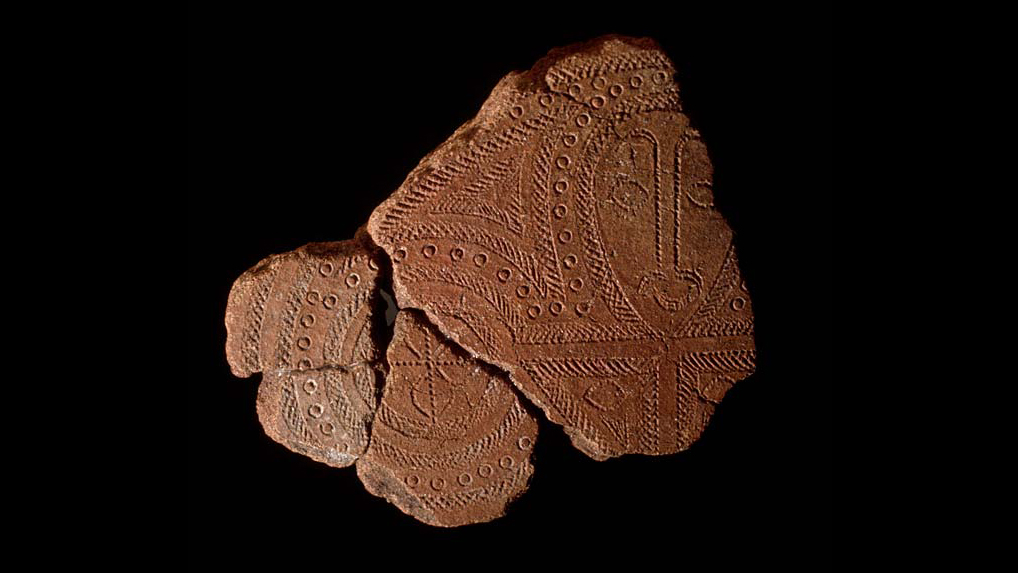 |
| Credit |
As I have written here for a previous A-Z year - pottery is the very earliest marker of humans, we have learnt to shape clay much before we learnt to sow seeds or spun wheels. Way before the invention of writing and language made it possible to keep records or transmit our feelings to others via words. Pottery is so ubiquitous that archaeologists use the analysis of its constituent materials to tie peoples and cultures together, such as Painted Grey Ware culture, Northern Black Polished Ware culture and so on. Look back far enough, dig deep enough and you'll always find some form of pottery to tell you about the lifestyles and belief systems our ancestors followed, what they ate and loved and celebrated.
The ancestral Fijians who arrived 3500 years ago, are characterised by the use of a pottery type called Lapita Ware and are a part of the Lapita culture. Some archaeological evidence is found in a place called Lakeba. There are other major sites in Sigatoka on the coral coast. Click the link to listen and read about Lapita pottery from the Fiji Museum. I personally loved that decorative edging of dancers holding hands and rocking to the beat of some ancient music, maybe round a fire late in the evening.
Lapita ware takes its name from the first site it was discovered at in New Caledonia - a group of islands to the South West of Fiji. While the debate is still on about where exactly Lapita pottery originated, archaeologists now know that beginning 1500 BCE the makers of Lapita ware started moving eastwards through the Pacific. So the ancestral Lapita peoples originally came from somewhere in South East Asia and gradually migrated and peopled the South Pacific - Micronesia, Melanesia and Polynesia.
The pottery is distinguished by its typical dentate designs and repeating geometric patterns. The first excavations were carried out in the 1950s and since then hundreds of sites have been found across Tonga, Fiji and Samoa. Read more about those here and here. The last has a very interesting video on how the Lapita peoples moved through the Pacific. Alternatively, watch this one, equally fascinating and illuminating, below:
The pottery making traditions still survive in the villages of Fiji today. Learn more about how they are made by clicking the link here.
All this month I'll be writing about Aspects of Fiji, which is where I'm at the mo. And where the sum of its lovely, lush parts is greater than the whole!
Did you know that Lautoka is the second city of Fiji, after the capital Suva - traditionally a major sugarcane centre (it's called the Sugar City, duh!) and a commercial hub? The main sugar mill was built here in the early 1900s by indentured workers from India and Solomon Islands for the Colonial Sugar Refining Company and it is still the major employer. Other industries include timber milling, garments, steelworks, paints, construction, brewery, jewellery and fishing items.
 |
| Saweni Beach at Lautoka on a lovely clear day. Lautoka port is the second largest port in Fiji and handles sugarcane and timber exports. |
 |
| The Western Regional Library at the City Centre next to the Law Courts. |
 |
| Lautoka City Centre. Court's with Diwali lamp cut out during festival season. Lautoka has a large concentration of Indo-Fijians so Diwali is an important celebration. |
Aaaand...just a little note to let
you know I'm super pleased to have family visiting from Lucknow, a long way away in India, so I
will be a bit late with my replies here, but I'll soon
be back and catch up with you after they leave.
~ Thank you for reading ~
Posted for the A-Z Challenge 2023

What a lovely and informative post. My SIL is a potter and she often speaks about when she has her hands in clay she feels a connection to all the ancient cultures. I'm late making my way here, but I'll be back to catch up on your previous posts.
ReplyDeleteI can't imagine a time before language.
ReplyDeleteAnother highly informative post. You did a great job delving into stuff I had no idea about. Somehow I never thought of pottery in relation to Fiji, but it makes total sense.
ReplyDeleteLee
Hari OM
ReplyDeleteLoved this and the Little fiLm... YAM xx
Enjoy your guests and leave us to linger over all of your posts so far. Your research largesse is outstanding.
ReplyDeleteEnjoy your visitors. To the max.
ReplyDeleteArchaelogy fascinates me, and the pottery is a part of that intrigue.
I love seeing pottery and other finds archeologists dig up.
ReplyDelete